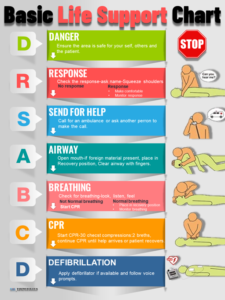How to Choose the Right Type of Disposable Glove
6 min readWhen someone says “work glove,” you might think of those bulky, durable leather gloves used in manual labor. Those are perfect for some types of work, but disposable gloves of various types have become common in the workplace. Disposable gloves are impermeable and offer protection against skin absorption and chemical burns while allowing for good grip and dexterity.
In this article, we’ll go over the different types of disposable glove materials and other features you should consider when selecting them for your workplace.


How to Choose Disposable Gloves
OSHA does not treat disposable gloves separately from other safety gloves. As such, when selecting the gloves, make sure they offer an appropriate level of protection for the hazard (or combination of hazards) inherent to the task.
29 CFR 1910.132 (d)(1)(i) stipulates that the employer has to “Select, and have each affected employee use, the types of PPE that will protect the affected employee from the hazards identified in the hazard assessment.”
Furthermore, article 1910.138(b) states that “Employers shall base the selection of the appropriate hand protection on an evaluation of the performance characteristics of the hand protection relative to the task(s) to be performed, conditions present, duration of use, and the hazards and potential hazards identified.“
These statements indicate that, while employees have a say in the selection of PPE, it is the employer’s responsibility to ensure that the glove is used and is appropriate for the hazard.
To determine the type of glove you need, you will have to perform a hazard assessment, identify which substances employees’ hands might come in contact with, and select a glove that will withstand that substance. Each chemical has different properties, and the PPE section of the chemical’s safety data sheet will specify which type of glove is recommended for handling that product.
Another consideration is how much grip and dexterity is required for performing a task.
Special consideration should be given to situations where chemical mixtures or several chemical hazards are present simultaneously. The glove you select should protect against all chemical hazards.
When to Use Disposable Gloves
Disposable gloves are a cost-effective way to handle chemicals or biological agents that contaminate the glove. The decontamination procedure is fairly complicated, expensive, and time-consuming. It makes sense, then, to sacrifice durability to avoid it.
Disposable gloves are recommended for low-intensity tasks and environments with low risk of cutting and puncturing. They should be used with caution if tearing the glove could result in immediate and serious adverse effects.
Some typical uses for chemical-resistant disposable gloves are:
- Changing a toner cartridge
- Working with adhesives
- Washing engine parts
- Cleaning and maintenance
- Performing an oil change
- Decanting substances from a large receptacle into a smaller one
- Painting
Common Disposable Glove Materials and Their Uses
Latex
Latex gloves offer reliable barrier protection with a consistent fit. Some people, however, are unable to use them due to allergic reactions.
Latex provides resistance against many biological and chemical agents, including:
- Nitric acid
- Hydrochloric acid
- Sulfuric acid
- Methanol
- Acetone
- Formaldehyde
- Phosphoric acid
- Potassium hydroxide
- Sodium hydroxide
- Some weed killers
Latex gloves are commonly used in laboratories, food handling, chemical plants, janitorial work, agriculture, and pharmaceuticals.
Advantages: Reliable barrier protection, consistent fit.
Disadvantage: Possible allergic reactions.
Learn more about How to choose the Right Safety Gloves 12 Types of hand Protection Gloves.)
Vinyl
Vinyl gloves are the most economical disposable option and are used for jobs that don’t require a high degree of tactile sensitivity, like in the food industry.
Vinyl offers good protection against acids, bases, amines, peroxides, and fats. They are frequently used in:
- Commercial fishing
- Maintenance
- Mining
- Fuel oil
- Mechanic work
- Construction
- Petrochemicals
Advantages: More economical than nitrile and latex. Non-allergenic.
Disadvantage: Looser fit.
Nitrile
Nitrile gloves are the most popular disposable gloves due to their strength and their chemical and abrasion resistance.
Nitrile gloves offer three times more puncture resistance than latex or vinyl, so you can take on tougher jobs with these gloves.
Nitrile disposable gloves are resistant to greases, most acids and bases, and oils. They are a great choice for mechanical work, laboratories, maintenance, or petrochemicals.
Advantages: Highest quality replacement for Latex. High puncture, chemical, and abrasion resistance.
Disadvantage: Does not offer the same degree of flexibility as latex.
(Learn more about Are Nitrile Gloves Safe?.)
Polyethylene
Polyethylene gloves are a cost-effective solution for creating a temporary barrier against contaminants. It is an ideal choice for users performing short-term tasks like in the food industry where multiple glove changes are needed. However, due to their fragility, their applicability is generally limited to food services or cleaning.
Advantages: Economical.
Disadvantage: Very short term single-use application, loose fit.
Other Considerations
Nature of Contact
When handling chemicals or biological agents, the protection provided by the gloves can be proactive (for incidental contact) or reactive (for extended contact). Obviously, when forecasting extended contact, you will need to choose gloves with a higher degree of protection.
Incidental contact implies little or no contact with the hazardous material and the PPE is worn just in case accidental contact is made.
The most common cases of incidental contact are:
- Accidental spills or splashes
- Accidental overspray from a dispensing device
- Handling infectious agents that require barrier protection
- To prevent contamination of materials during handling
Extended contact includes the following situations:
- Handling highly contaminated materials
- Submerging hands in a chemical or other hazardous substance
- Need for physical protection from temperature extremes or sharp/piercing objects
Thickness
Disposable gloves come in different thicknesses. The thicker the glove the better in terms of durability, and it will take longer for chemicals to permeate thicker material.
Thicker gloves have their downsides, however. The thicker the material, the lower the dexterity and flexibility of the glove. When choosing the thickness of a disposable glove, be sure to calculate how important these characteristics are. If dexterity is required, then thinner gloves should be used and replaced more frequently.
Color
While not the most important criteria for choosing a glove, the color of the glove could still matter. When assembling small parts and dexterity is important, contrasting colors can make it easier to see the items being handled, shortening the length of the task and minimizing lost parts.
Modulus/Rigidity
The type of material and its thickness dictate how flexible a glove is. Gloves that have high modulus (high rigidity) require more force when working and can increase fatigue.
Usually, gloves that are more rigid have higher tensile strength, requiring more force to break them. It follows that when the hazard is high or when dexterity is not that important a more rigid glove can have a longer life, decreasing the cost.
Finish Type
Disposable gloves could be smooth or texturized. Smooth gloves provide better dexterity, while texturized gloves provide, at least theoretically, better grip. Grip, however, is mostly determined by the inherent qualities of the material or its coating.
Size
The sizing of disposable gloves is similar to those of regular safety gloves, with the caveat that most disposable gloves are elastic and as such, there is a snug fit.
While regular safety glove sizes can be expressed either numerically (generally 6 to 10) or in letter sizes (XS, S, M, L, XL, XXL), most disposable gloves are expressed in letter sizes.
Conclusion
Choosing the disposable glove that is most appropriate for the job can be a daunting task, especially considering their lack of mechanical resistance and how severe the repercussions of making the wrong choice can be. The multitude of chemicals in our workplaces and the variety of tasks further complicate the process. To ensure you make the best choice, know your worksite conditions, read the SDS and if you’re still in doubt, contact the manufacturer of one of its local sales representatives.



